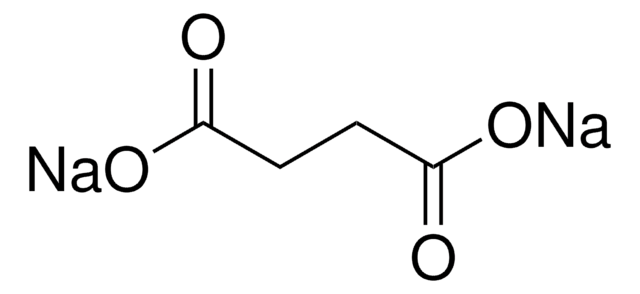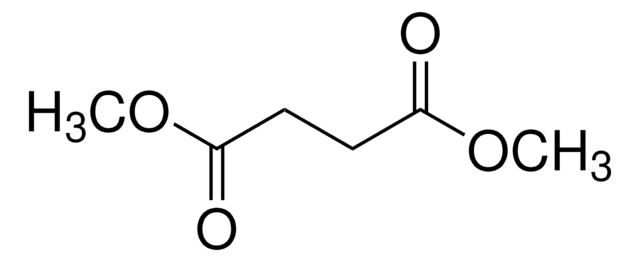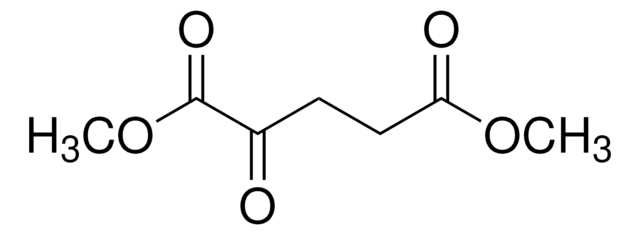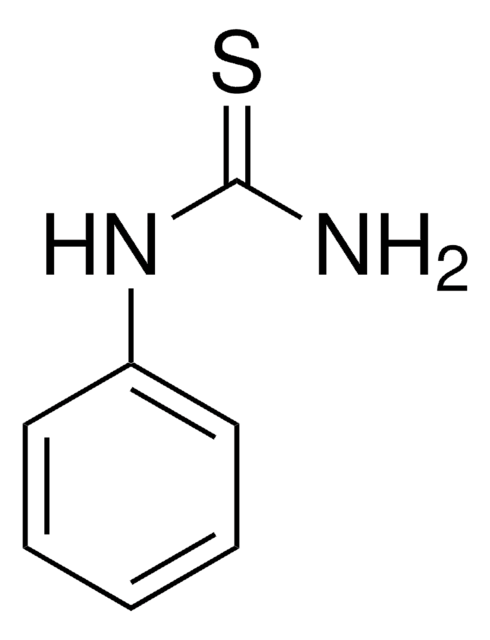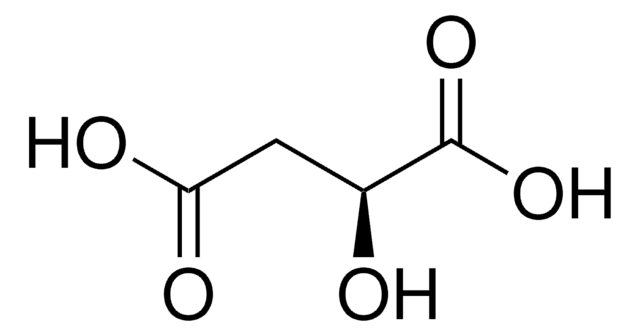S9637
Sodium succinate dibasic hexahydrate
BioReagent, suitable for cell culture, suitable for insect cell culture
Sinónimos:
Butanedioic acid disodium salt, Succinic acid disodium salt
About This Item
Productos recomendados
product line
BioReagent
Quality Level
technique(s)
cell culture | insect: suitable
cell culture | mammalian: suitable
pH
8—9.5 (25 °C, 270 g/L)
solubility
H2O: 100 mg/mL, clear, colorless
SMILES string
O.O.O.O.O.O.[Na+].[Na+].[O-]C(=O)CCC([O-])=O
InChI
1S/C4H6O4.2Na.6H2O/c5-3(6)1-2-4(7)8;;;;;;;;/h1-2H2,(H,5,6)(H,7,8);;;6*1H2/q;2*+1;;;;;;/p-2
InChI key
ZBTUYCUNQBRXOR-UHFFFAOYSA-L
¿Está buscando productos similares? Visita Guía de comparación de productos
General description
Application
- as a supplement in the assay medium to incubate mitochondria to measure the specific activity of complex-II
- as a component in plant induction medium/ protoplast induction media (PIM) for plant regeneration
- as a small-molecule additive in the fresh medium to study its positive synergistic effects on transgene expression in Chinese hamster ovary (CHO) cells
Features and Benefits
- Versatile and adaptable for a wide variety of laboratory and research applications
- BioReagent Grade Sodium succinate for your Cell Biology and Biochemical research
- Tested for Mammalian and Insect cell culture applications
Other Notes
¿No encuentra el producto adecuado?
Pruebe nuestro Herramienta de selección de productos.
Storage Class
11 - Combustible Solids
wgk_germany
WGK 1
flash_point_f
Not applicable
flash_point_c
Not applicable
ppe
dust mask type N95 (US), Eyeshields, Gloves
Elija entre una de las versiones más recientes:
¿Ya tiene este producto?
Encuentre la documentación para los productos que ha comprado recientemente en la Biblioteca de documentos.
Los clientes también vieron
Nuestro equipo de científicos tiene experiencia en todas las áreas de investigación: Ciencias de la vida, Ciencia de los materiales, Síntesis química, Cromatografía, Analítica y muchas otras.
Póngase en contacto con el Servicio técnico


